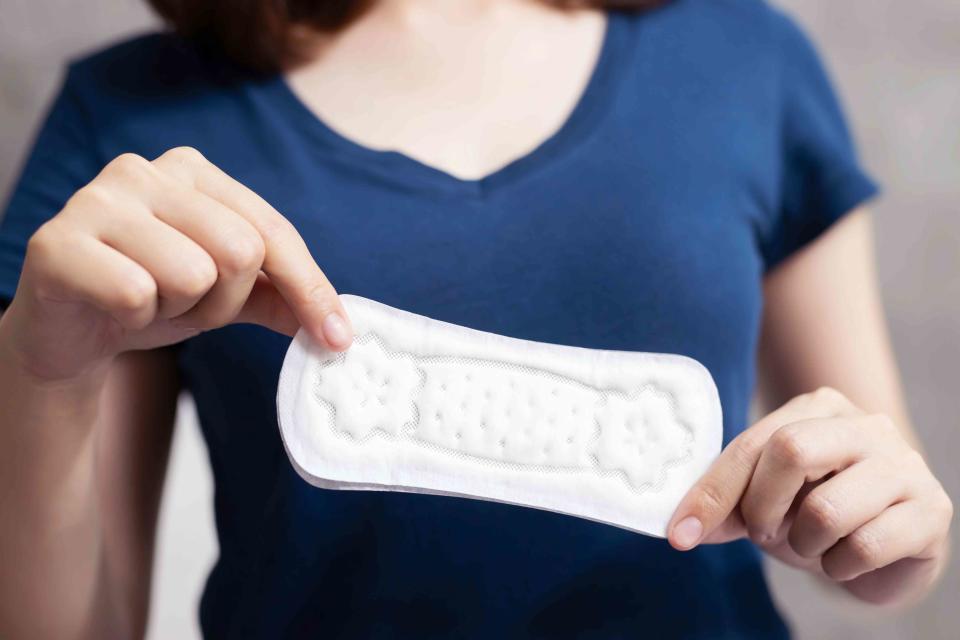Is Bleeding During Ovulation Normal?
Some people experience light spotting when their ovary releases a mature egg—and this is usually normal. Learn how to recognize ovulation bleeding and when to see a doctor.

Getty Images / Rattankun Thongbun
Medically reviewed by Alyssa Dweck, MS, MD, FACOG
Though it happens every month, ovulation isn't always easy to detect (hence the "ovulation predictor kits" you find at the drugstore). Still, some people experience mild symptoms when their ovary releases an egg, such as ovulation bleeding.
It might be concerning to notice spotting outside of your period, but ovulation bleeding isn't usually a problem. Keep reading to learn what causes ovulation bleeding, how you can distinguish it from other types of bleeding, and when to see a health care provider.
What Is Ovulation?
In a menstrual cycle, ovulation happens when an ovary releases a mature egg, which travels down the fallopian tube and survives for 12-24 hours. You can get pregnant if the egg is fertilized with sperm during this time; otherwise, it sheds with your monthly period.
What Causes Ovulation Bleeding?
Pretty much any predictable bleeding or spotting that occurs during a person's menstrual cycle is caused by hormonal changes, says Kari Braaten, MD, MPH, medical director of the Fish Center for Women's Health at Brigham and Women’s Hospital in Boston.
“Predictable mid-cycle bleeding that’s light and scant is likely related to the rapid drop in the hormone estrogen immediately following ovulation,” explains Dr. Braaten. Progesterone levels, on the other hand, steadily increase after ovulation. All of this hormonal fluctuation can contribute to ovulation bleeding.
Characteristics of Ovulation Bleeding
Think you might be experiencing bleeding that’s related to ovulation? Studies show that it occurs in about 5% of menstruating individuals. Below, Dr. Braaten shares some common signs.
Small amount of bleeding (more like spotting or a few drops of blood)
Light pink or red color
Lasts for one or two days
Might be associated with mittelschmerz (crampy ovulation pain that occurs on one side)
Appears after a peak fertile sign on an ovulation predictor kit
Furthermore, ovulation bleeding might be accompanied by a change in cervical mucus that happens during this part of your menstrual cycle. The mucus usually appears "stretchy, slippery, and thin” during ovulation, says Alan Lindemann, MD, an OB-GYN practicing in Elgin, North Dakota. The consistency might resemble raw egg whites.
Related: Finding Your Most Fertile Days: A 3-Step Guide
When Does Ovulation Bleeding Happen?
Ovulation (and therefore ovulation bleeding) will occur at the same time every month—generally 14 days before the start of your next menstrual cycle, regardless of your cycle length, says the American College of Obstetricians and Gynecologists (ACOG). Though it's important to note there's a wide variation of normal, and timing can vary even between months.
Dr. Braaten recommends pinpointing your ovulation dates, especially if your cycle is regular, to determine if the bleeding could be related. An ovulation calculator (like the one below) can help determine an estimated ovulation date.
Other Signs of Ovulation
Around the time of ovulation bleeding, you might notice other signs that your ovary has released an egg—though not everyone will have ovulation symptoms. They include the following:
Bloating
Sore breasts
Heightened sex drive
Change in cervical mucus (stretchy and thin like egg whites)
Mittelschmerz or ovulation pain
Heightened smell or taste
Increased basal body temperature, as determined with a basal body thermometer
Ovulation Bleeding vs. Implantation Bleeding
In some people, implantation bleeding happens when a fertilized egg burrows into the lining of the uterus to form a pregnancy. It's often very light, pink to dark brown, and occurs for a short time—all of which might look similar to ovulation bleeding. So how can you tell the difference between the two?
Timing is probably the most telltale factor. “While ovulation bleeding occurs at the time of ovulation, implantation bleeding would occur 6 to 12 days after ovulation,” says Dr. Lindemann. Indeed, implantation bleeding is often confused with the start of the menstrual period, with many people simply assuming their period has started early.
Related: Implantation Bleeding or Your Period? How To Tell the Difference
Ovulation Bleeding vs. Menstrual Period
Ovulation bleeding might resemble a very light menstrual period, though there are ways to differentiate the two. “Menstrual bleeding is darker, heavier, lasts longer, and might even contain chunks or clots," says Dr. Lindemann. "There’s also usually more cramping and pain associated with menstrual bleeding."
The timing also plays a role. Your period comes about 21 to 35 days into your cycle, though there's a wide range of normal. On the other hand, ovulation occurs between 10 and 21 days into your cycle.
Here are some characteristics of your menstrual period:
Bleeding lasts two to seven days
Generally starts light, gets heavier for a few days, then lightens again
Total blood loss is around 2 to 3 tablespoons
Blood is often red (though brown blood is also possible)
You might notice blood clots
When to Seek Medical Attention
If you're concerned about your menstrual cycle, especially for reasons like bleeding or spotting, it’s best to bring it up with your health care provider. But some instances certainly warrant a call to your doctor.
“Experiencing mid-cycle bleeding that doesn’t follow a predictable pattern or happens more than once in any given cycle can be a cause for concern, says Dr. Braaten. She also recommends visiting your doctor for abnormally heavy bleeding, very large clots, unusual pain, or spotting after sex.
"These could be signs of things like fibroids, polyps, or sexually transmitted diseases, or they could be an indicator of perimenopause or other hormonal imbalance," says Dr. Braaten. Abnormal spotting could also indicate pregnancy (including ectopic pregnancy), endometriosis, or other conditions—so it doesn't hurt to get checked out if you're unsure.
For more Parents news, make sure to sign up for our newsletter!
Read the original article on Parents.

